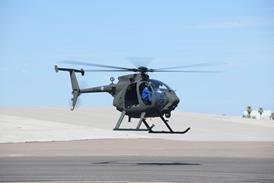A British research project which is investigating improvements to emergency flotation devices has recommended further development of two devices which it believes could prevent helicopters which have ditched in heavy seas from inverting.
BMT Fluid Mechanics, with help from GKN Westland Helicopters, has been undertaking the study for the UK Civil Aviation Authority. The work follows six ditchings, mainly in the North Sea, one of which resulted in 11 fatalities.
The project's aim was to find a solution to the problem of ditched helicopters which with current flotation devices deployed, often capsize in moderate to heavy sea-states, making escape hazardous.
The design work plans to ensure that some of the cabin doors and windows remain above water level, preventing the cabin from filling with water.
Ten ideas for flotation devices were initially developed by the BMT/Westland team, from which a shortlist of three was made for model testing at the Haslar Hydrodynamic Test Centre. The three, all designed to provide buoyancy around the upper fuselage and engine cowling, are:
- a foam-filled engine/gearbox cowling panel;
- long tubular flotation devices attached to the upper cabin walls;
- tethered flotation units.
Tests have showed that the most effective device is the foam-filled engine/ gearbox cowling panel, followed by the tubular flotation unit.
The tethered units were found to be ineffective. It was also discovered that raising the quantity and distribution of flotation devices could improve the overall crashworthiness of the emergency system.
With the study complete, BMT Fluid Mechanics, a subsidiary of British Maritime Technology, is hoping that the work will be taken on by industry.
The study recommends further development based on helicopter-type specific designs to address issues such as buoyancy in the engine/gearbox compartment and upper fuselage area
Source: Flight International























